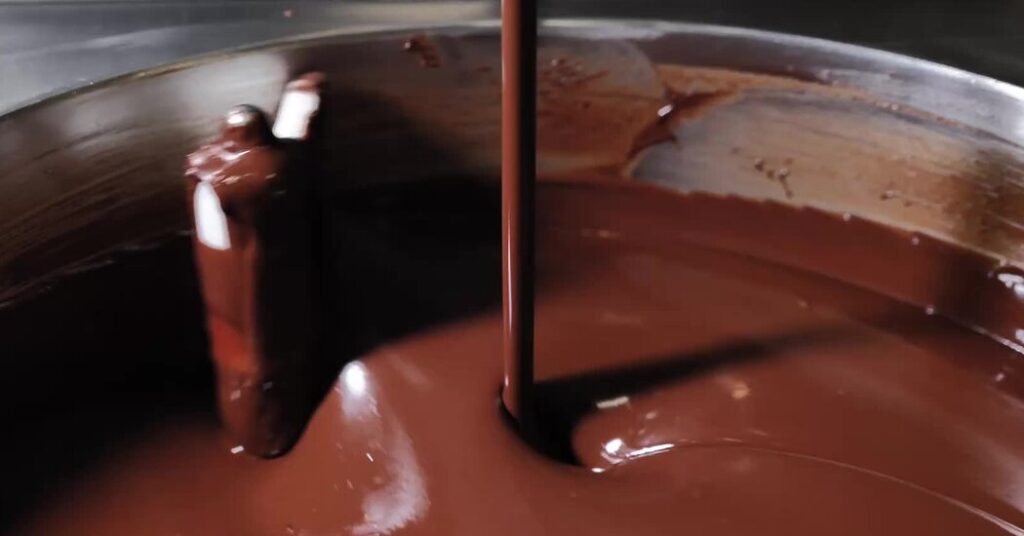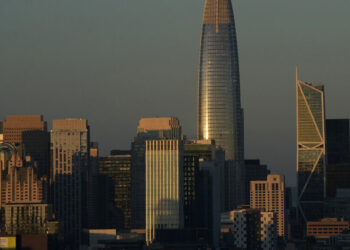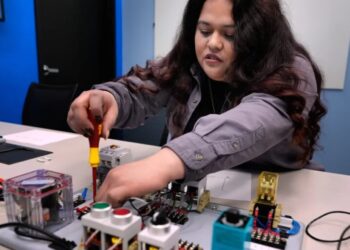The Amazon rainforest, origin of the cacao bean, is giving life to a nascent craft chocolate movement in Brazil.
Global traders have long bought cacao beans grown in the forest at relatively low prices and sold them to big chocolate brands abroad. Now, the new Brazilian chocolatiers are catering to their country’s growing upscale urban market, making chocolate in Brazil, sometimes blending in other Amazonian fruits and nuts.
The aromatic vanilla-like seed of the cumaru tree, for instance.
A buttery, floral fruit called bacuri.
Brazil nuts.
Açai berries.
And cacao’s lighter, tangier Amazonian cousin — the cupuaçu.
These are chocolates made with what Guilherme Leal, one of the country’s best-known businessmen and the founder of Dengo Chocolates, calls “the flavor of Brazil.”
“High-quality chocolate, desirable chocolate — I hope you enjoy — but with a proper identity,” Mr. Leal said in an interview in Belém, on the sidelines of the international climate conference known as COP30.
The new chocolate makers range from tiny local operations inside the Amazon to big companies like Dengo, with its chain of boutiques across Brazil.
César De Mendes, for instance, began with a chocolate bar made with native cacao harvested by the Yanomami Indigenous group. He called it “cacao planted by God.”
Izete Costa, widely known as Dona Nena, started selling her homemade chocolate bars in city fairs and realized she could earn more than she could by just selling her cacao beans.
Fabio Sicilia, a Belém restaurateur, turned to chocolate making when he realized that few Brazilians knew that the cacao bean comes from the Amazon. “It’s the land of cacao itself!” he said.
They are at the vanguard of what Brazil is hoping to promote to the world: The idea that there is money to be made from products that can save the Amazon, not devour it. Cacao is one of the most lucrative of these. Açai is already a global crossover. Cupauçu could be, too. One recent study by the World Resources Institute estimated that forest products like cacao could yield an additional $8.2 billion a year to the economy of the Brazilian Amazon by 2050.
Craft chocolate entrepreneurs say their goal is not just to make a high-end product, but also to ensure that small farmers in the Amazon can make a living from high-value foods that preserve the forest. Cacao is a child of the Amazon, after all. It needs the forest. It needs to grow under the umbrella of taller trees. Its leaves shed throughout the year, covering the ground with nutrients.
COP30 has certainly helped the sales of craft chocolate. Ms. Costa’s Filha do Combu brand doubled its production. Mr. Sicilia’s shop in Belém had sold out of a popular offering of dark chocolate with açai and tapioca crunch. Mr. De Mendes said, midway through the conference, that he didn’t have a single bar left to sell.
Life is not all sweet for these craft brands, though. Prices for cacao beans have gone up sharply on the global market. That is squeezing the margins of the small brands. It’s also creating a temptation to create large cacao plantations, with high-yielding seeds and lots of chemical fertilizers. That, in turn, raises the risk that big cacao monoculture operations could eat up more of Brazil’s native forest and grasslands.
On a recent Tuesday morning, the garage door of a nondescript building in the middle of Belém rolled open to reveal Mr. Sicilia, smiling, in a white lab coat. Under the coat he had on his signature button-down shirt, printed with illustrations of cacao beans. He has 10 such shirts in 10 different colors, he said. He wears them every weekday.
That day’s shirt was a brushed green.
He had warned visitors to his chocolate production facility to not wear perfumes or perfumed lotions. Cacao absorbs scent easily, and even if no one else can tell, Mr. Sicilia can. He is also a trained sommelier. Once he smelled chickens in a batch of beans that came in. When he went to the site, sure enough, there were chickens on the farm.
Mr. Sicilia has been getting cacao beans from the same farmers in the Amazon for most of the last 20 years. They send him photos of the first fruits on their trees, their harvests, their children’s birthday parties.
For the first 17 of its 20 years of business, his chocolate brand lost money. For Mr. Sicilia, there was no question of giving up. Chocolate was his passion, he said — so much so that he named the brand Gaudens, which comes from a Latin word that means “delight” or “rejoice.” Its logo is a round, ample capital G, with a tiny dot inside.
“G-spot,” Mr. Sicilia said brightly.
Behind him a machine gently stirred açai and cocoa together, the brown of the beans taking in the deep purple of the berry. The aroma of cacao hung thick in the air. Temperatures were carefully controlled. The steamy hot funk of the forest was kept at bay.
He offered a fistful of cacao nibs and instructed his guests to chew, mouth closed. “Pay attention to the aftertaste,” he said.
“Chocolate should never be bitter,” Mr. Sicilia continued. If it is, he said, that’s the fault of those who have fermented the beans and then roasted the beans. Mr. Sicilia roasts his beans in the yard behind his restaurant. “One of my secrets,” he whispered.
In the second room of the small, narrow Gaudens factory stood a row of plastic bins filled with cacao nibs, each one labeled with the name of the farmer and the date of harvest. Farmer Ivan’s beans, Mr. Sicilia explained, are good for milk chocolate, while farmer Bico’s beans are best for the vegan chocolate bars with 71 percent cocoa.
Brazil’s craft chocolatiers represent a tiny portion of the market. Most Brazilian producers sell to trading companies that mix the beans for mostly mass-market chocolate brands. While a few producers are growing huge plantations of cacao, the crop has long been grown with other Amazonian trees, along with fruits and nuts that forest communities have relied on for centuries for sustenance and delight.
“There’s a misconception of pristine forests,” said José Otavio Passos, who leads Amazon conservation for the Nature Conservancy. “Indigenous people have been managing it for thousands of years.”
Mr. Leal, the founder of Dengo, hopes that brands like his can help Brazilians appreciate what their forests offer. These aren’t Belgian or Swiss chocolates. They’re Brazilian chocolates.
“There is this cultural view that Swiss chocolate is fantastic, and most of them are very good, really,” he said. “If you offer good products showing that you are Brazilian, that you are socially responsible, that you are original, that you are pleasant, good, tasty, we can start to change this.”
The name of his company, Dengo, embraces that goal. Brazilians use the word to denote affection or care.
A Dengo boutique occupies a storefront in the upscale Ipanema neighborhood of Rio de Janeiro. Bars and tins are adorned with whimsical illustrations of forest fruits and birds. A barista offers espresso drinks. And as they usually do on Friday afternoons, Thales Laray and Danielle Couto sit at a table by the window. On this visit, they share a hunk of 62 percent dark chocolate, dotted with cashews and cupuaçu.
Mr. Laray said he appreciated that the cacao came from small producers and that it was all from Brazil’s own forests.
“There’s a story behind it,” he said.
“For a long time, we know good chocolate is from the Swiss or from Belgium,” Ms. Couto added. “Now we have good chocolate in Brazil.”
Flávia Milhorance contributed reporting from Rio de Janeiro.
Somini Sengupta is the international climate reporter on the Times climate team.
The post Chocolate Grows Up in the Land of Its Birth: the Amazon appeared first on New York Times.




